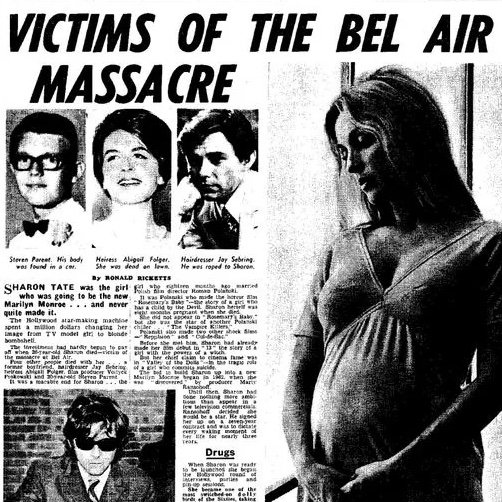Listen to this episode on Apple Podcasts.
Roman Polanski was in London the night his pregnant wife was murdered in their home. He returned to Los Angeles, devastated, to find himself wanted for questioning in a crime which the LAPD, initially, had no idea how to solve. The next decade of Polanski's life would be a rollercoaster, hitting heights like his masterpiece Chinatown, and lows like his alleged rape of a 13 year old girl and subsequent exile from the US.
Show Notes:
Special thanks to Ram Bergman, making his final appearance as Roman Polanski.
The base list of sources for this series can be found here. This episode primarily draws from the books Roman by Roman Polanski, The Kid Stays in the Picture by Robert Evans, and The Girl by Samantha Geimer, as well as Julian Wasser's memories of photographing Polanski at Cielo Drive and several interviewswith Samantha Geimer.
Episode breakdown:
Intro: "Album Tag Song" by Dennis Wilson; "Modern Heavy Guitar Top Line" royalty free track
Altamont: "Under My Thumb" by The Rolling Stones
Roman Polanski's return to Los Angeles; his temporary home, Julie Andrews' dressing room; the rumors that the murder victims did something to deserve it; Polanski's detective work; Polanski leaves Los Angeles; Polanski hangs out with schoolgirls in Switzerland, justifies his prediliction for teenagers: "Snow Drop" by Kevin MacLeod
Playboy's production of Macbeth; the X-rated What?; Polanski's Roman commune: "OLPC" by Marco Raaphorst
Problems with the screenplay for Chinatown: "Zenda" royalty free track
Polanski's battles with Robert Towne; Chinatown as the ultimate 70s film; Polanski returns to Rome, starts dating Natassja Kinski; edits French Vogue; the trend of sexy photographs of young girls in European fashion magazines; Polanski meets Samantha Geimer: "Stormy Moods Orchestra" by Apache Tomcat
Polanski's first photoshoot with Samantha; Samantha thought of herself as a child who was following directions from an adult who could make her famous: "Family Tree" by Jahzzar
Polanski's second photoshoot with Samantha; differing recollections of conversation about Samantha's sexual experience; Samantha agrees to go to Jack Nicholson's house: "Pretty Mellow Clean Guitar" royalty free loop
Shooting photos at Jack Nicholson's house: "Oxygen Garden" by Chris Zabriskie
What happened after the photoshoot; Roman takes Samantha home and smokes pot with her mom; Polanski is surprised to be arrested for rape; both accuser and accused are tried in the media; Polanski accepts plea deal and then flees the country; Polanski's Tess: Samantha Geimer publicly forgives Polanski; Polanski apologizes to Samantha: "For Better or Worse" by Kai Engel
End Credits: Panorama Synth Pad GarageBand Loop
Outro: "School Girl" by Dennis Wilson



